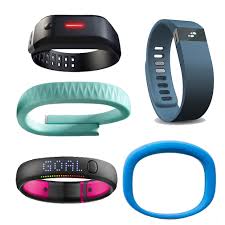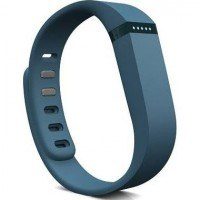This may be the breakout year for wearable devices. [I see them as part of my top 10 marketing trends for this year]. The wearable fitness tracker market is still somewhat niche, but it is growing rapidly and is projected to reach 60+ million units by 2017 (various estimates). ABI Research has written that they project revenues for the wearable wireless devices will reach $60B in 2018 versus $330 million in 2013 [for the “digital fitness devices”]. The Nike+ Fuelband community is reportedly over 20 million strong — although I cannot verify that all 20 million have also purchased a Fuelband. Overall numbers for this category remain vague as there are no “industry” stats as yet.
Comparing digital fitness device features
For the last month, I have been wearing, testing and comparing the FitBit Flex versus the Nike FuelBand with the purpose of finding out just what is the attraction and state of the technology. Here is my take on the different features and where each has its advantages:
|
Fitbit |
FuelBand |
Comments | |
| Aesthetics |
✔✔ |
Sleeker and many more options – for a wider audience appeal. | |
| Comfort |
✔✔ |
Fitbit is smaller and softer. The hard FuelBand is particularly uncomfortable when working on a computer. The fact that the Fitbit is waterproof is another big plus. | |
| Tracking options |
✔✔ |
Both do steps and calories. Nike’s fuel measurement is proprietary but essentially meaningless. Definitely prefer Fitbit for the sleep tracker. | |
| Accuracy |
✗ |
✗ |
Results on steps and calories are misleading (see below). Neither wins. The only exact measurement is time on the FuelBand; it just needs to be synchronized in order to adjust to time zone changes. |
| Bracelet information |
✔ |
FuelBand has a digital display, albeit a bit clunky. [Fitbit Force has a small screen] | |
| Battery Life |
✔ |
FuelBand autonomy lasts for closer to 10 days vs 5 days for Fitbit. | |
| Website interface |
✔ |
Both have good and clean interfaces. Fitbit wins because of the more robust options (food and other). | |
| Social integration |
✔✔ |
Fitbit imposes social sharing if you link the accounts. #fail. Also, Nike+ has Facebook connect (also on the mobile). Furthermore, FuelBand has a more visible and vibrant community. | |
| Mobile |
= |
= |
Equal. Both have good interfaces for mobile and iPad. Just a minor preference having Facebook Connect to log in with FuelBand. N.B. I didn’t check the Android situation. |
| Sizzle |
✔ |
The fact that Fitbit can provide an “alarm” in sync with your sleep cycle is a really attractive bonus. |
Measuring what?
If these fitness measuring devices are to have a solid future, surely accuracy will be important. Otherwise, they risk becoming as much of a pet as a pet rock (these did exist for a short while in the 1970s).
Here is a breakdown of what each bracelet measured over a period of 30 days.
The disparity between the steps and calories of the two devices is, frankly, a discredit to each, although I would tend to lean on Fitbit more than FuelBand’s results. For example, the average daily calories burned for an adult is 2,000. Ironically, it seems that the Nike fuel I consume is closer to the calories on the FitBit. There may be an element of difference because of the different wrists on which I wore them: right wrist for Nike and left wrist for FitBit. But, since I am right-handed, that ought to translate into a bit more activity with Nike.
Bottom line – Hoax or Coach?
Bottom line, these wearable devices are measuring more hot air than heavy breathing. The figures of Nike are definitely more a hoax. In any event, the point is that these devices are more a reminder, a virtual jog of the memory with regard to keep on the move. I think the most elegant way to call them is as the quiet coach. [Tweet this!]
Of the two devices, I prefer FitBit Flex by a digital mile (however long that might be). I remain optimistic that these devices will only get better as innovation dollars and competition heats up. I am particularly optimistic about merging these functionalities into a super-connected watch.
What’s your take? Anyone like to chime in on the third player in the market: Jawbone. If these measurements were embedded in your watch or glasses, would you prefer them?














Trackbacks/Pingbacks